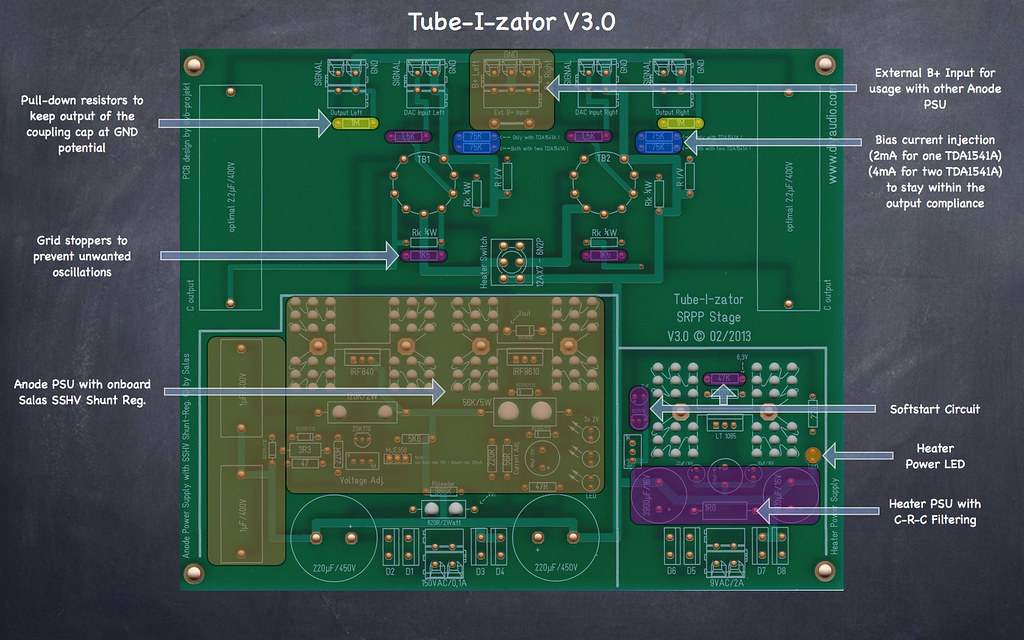2] Basically, this is me trying to do a 2-layer PCB layout based on the LPUHP circuit schematic.
I'm using FeePCB for laying out. Not hit any problems with the software yet and it produces Gerber RS247X files. The parts library is none specific, so I'm having to generate footprints from datasheets as I go.
Notes:
1) Untested PCB design [should work though].
2) 2-Layer PCB.
3) 2 channels per board [16 x LME49600].
4) LME49722 with 4x gain.
5) Up to +/-18VDC rails.
6) Separate regulated power supply.
7) Utilise a 10K Alps RK27 for volume control.
8) 8 Watt into 8 Ohm [based on 2VRMS input].
Aim is to create 1 x power supply & 1 x amp board of a small enough form factor to fit in a desktop friendly case. With an output of 8 Watt into 8 Ohm load, for up close & nearfield listening in a small room.
Why the LME49722. Its drop in replacement to the nice 49720 but will run on +/-18VDC,...















